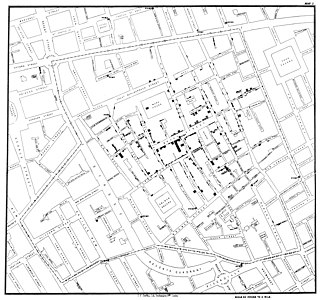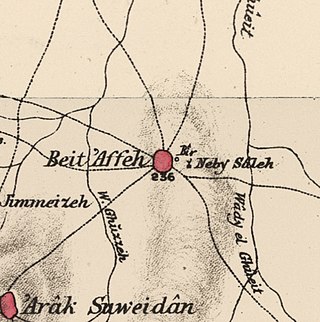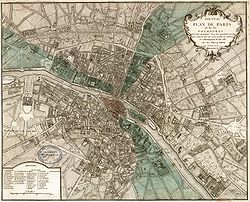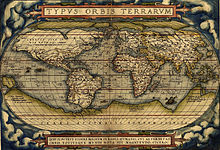
Human geography or anthropogeography is the branch of geography which studies spatial relationships between human communities, cultures, economies, and their interactions with the environment, examples of which include urban sprawl and urban redevelopment. It analyzes spatial interdependencies between social interactions and the environment through qualitative and quantitative methods.This multidisciplinary approach draws from sociology, anthropology, economics, and environmental science, contributing to a comprehensive understanding of the intricate connections that shape lived spaces.

Political ecology is the study of the relationships between political, economic and social factors with environmental issues and changes. Political ecology differs from apolitical ecological studies by politicizing environmental issues and phenomena.

A geographer is a physical scientist, social scientist or humanist whose area of study is geography, the study of Earth's natural environment and human society, including how society and nature interacts. The Greek prefix "geo" means "earth" and the Greek suffix, "graphy", meaning "description", so a geographer is someone who studies the earth. The word "geography" is a Middle French word that is believed to have been first used in 1540.

Kawfakha' was a Palestinian village located 18 kilometers (11 mi) east of Gaza that was depopulated during the 1948 Arab-Israeli war.

Hamama was a Palestinian town of over 5,000 inhabitants that was depopulated during the 1948 Arab-Israeli War. It was located 24 kilometers north of Gaza. It was continuously inhabited from the Mamluk period until 1948.

Isdud was a Palestinian village tracing back at least to the Ottoman period of the Palestine region. In 1945, it had a population of 4,620 Arabs and 290 Jews, three years prior to the 1948 Arab-Israeli War, during which the Arab inhabitants either fled or were expelled.
Carl Ortwin Sauer was an American geographer. Sauer was a professor of geography at the University of California at Berkeley from 1923 until becoming professor emeritus in 1957. He has been called "the dean of American historical geography" and he was instrumental in the early development of the geography graduate school at Berkeley. One of his best known works was Agricultural Origins and Dispersals (1952). In 1927, Carl Sauer wrote the article "Recent Developments in Cultural Geography," which considered how cultural landscapes are made up of "the forms superimposed on the physical landscape."
Wilbur Zelinsky was an American cultural geographer. He was most recently a professor emeritus at Pennsylvania State University. He also created the Zelinsky Model of Demographic Transition.

Cultural geography is a subfield within human geography. Though the first traces of the study of different nations and cultures on Earth can be dated back to ancient geographers such as Ptolemy or Strabo, cultural geography as academic study firstly emerged as an alternative to the environmental determinist theories of the early 20th century, which had believed that people and societies are controlled by the environment in which they develop. Rather than studying pre-determined regions based upon environmental classifications, cultural geography became interested in cultural landscapes. This was led by the "father of cultural geography" Carl O. Sauer of the University of California, Berkeley. As a result, cultural geography was long dominated by American writers.
Animal geography is a subfield of the nature–society/human–environment branch of geography as well as a part of the larger, interdisciplinary umbrella of human–animal studies (HAS). Animal geography is defined as the study of "the complex entanglings of human–animal relations with space, place, location, environment and landscape" or "the study of where, when, why and how nonhuman animals intersect with human societies". Recent work advances these perspectives to argue about an ecology of relations in which humans and animals are enmeshed, taking seriously the lived spaces of animals themselves and their sentient interactions with not just human but other nonhuman bodies as well.

Bayt Daras was a Palestinian Arab town located 32 kilometers (20 mi) northeast of Gaza and approximately 50 meters (160 ft) above sea level, which was depopulated in 1948.

Al-Jura was a Palestinian village that was depopulated during the 1948 Arab-Israeli war, located immediately adjacent to the towns of Ashkelon and the ruins of ancient Ascalon. In 1945, the village had a population of approximately 2,420 mostly Muslim inhabitants. Though defended by the Egyptian Army, al-Jura was nevertheless captured by Israel's Givati Brigade in a November 4, 1948, offensive as part of Operation Yoav.

Gaza Sanjak, known in Arabic as Bilād Ghazza, was a sanjak of the Damascus Eyalet, Ottoman Empire centered in Gaza, northwards up to the Nahr al-‘Awja/the Yarkon River. In the 16th century it was divided into nawahi : Gaza in the south and Ramla in the north along the Nahr Rūbīn/Wādī al-Ṣarār.

Julis was a Palestinian Arab village in the Gaza Subdistrict, located 26.5 kilometers (16.5 mi) northeast of Gaza on a slight elevation along the southern coastal plain. In 1945, there were 1,030 inhabitants in the village. It was depopulated during the 1948 Arab-Israeli War.

Bayt 'Affa was a Palestinian village in the Gaza Subdistrict. It was depopulated and destroyed during the 1947–48 Civil War in Mandatory Palestine. It was located 29 km (18 mi) northeast of Gaza and Wadi al-Rana ran east of the village.

Al-Khisas was a Palestinian Arab village located 18.5 kilometers (11.5 mi) northeast of Gaza near the modern city of Ashkelon.

Ni'ilya was a Palestinian village in the Gaza Subdistrict. It was depopulated during the 1948 Arab–Israeli War on November 4, 1948, under Operation Yo'av. It was located 19 km northeast of Gaza in the city territory of modern Ashkelon. The village was defended by the Egyptian Army.

Al-Sawafir al-Sharqiyya was a Palestinian Arab village in the Gaza Subdistrict. It was depopulated during the 1948 War on May 18, 1948, as part of the second stage of Operation Barak. The village was located 32 km northeast of Gaza. It is one of three namesake villages, alongside Al-Sawafir al-Gharbiyya and Al-Sawafir al-Shamaliyya.
Andrew Sluyter is an American social scientist who currently teaches as a professor in the Geography and Anthropology Department of the Louisiana State University in Baton Rouge. His interests are the environmental history and historical, cultural, and political ecology of the colonization of the Americas. He has made various contributions to the theorization of colonialism and landscape, the critique of neo-environmental determinism, to understanding pre-colonial and colonial agriculture and environmental change in Mexico, to revealing African contributions to establishing cattle ranching in the Americas, and to the historical geographies of Hispanics and Latinos in New Orleans. With the publication of Black Ranching Frontiers: African Cattle Herders of the Atlantic World, 1500–1900 and a 2012–13 Digital Innovation Fellowship from the American Council of Learned Societies, he has joined a growing number of scholars from multiple disciplines working from the perspective of Atlantic History and using the tools of the Digital Humanities. His latest book, Hispanic and Latino New Orleans: Immigration and Identity since the Eighteenth Century, co-authored with Case Watkins, James Chaney, and Annie M. Gibson, was awarded the 2015 John Brinckerhoff Jackson Book Prize by the American Association of Geographers.

Agricultural geography is a sub-discipline of human geography concerned with the spatial relationships found between agriculture and humans. That is, the study of the phenomenons and effects that lead to the formation of the earth's top surface, in different regions.


















